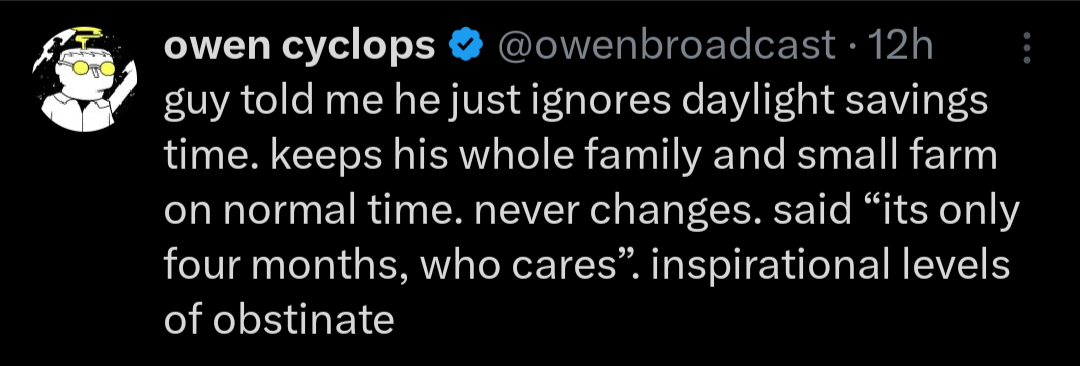this post was submitted on 07 Oct 2024
1141 points (99.4% liked)
People Twitter
5508 readers
2105 users here now
People tweeting stuff. We allow tweets from anyone.
RULES:
- Mark NSFW content.
- No doxxing people.
- Must be a pic of the tweet or similar. No direct links to the tweet.
- No bullying or international politcs
- Be excellent to each other.
- Provide an archived link to the tweet (or similar) being shown if it's a major figure or a politician.
founded 2 years ago
MODERATORS
you are viewing a single comment's thread
view the rest of the comments
view the rest of the comments

I’ve read we would all compensate in ways that would essentially bring back time zones.
Reminded me of this:
Falsehoods programmers believe about time
short list
Nope I lied
GMTtime zone.1339972628or133997262837.05/07/11.Nto eitherN+1or1, with no discontinuities.DST.HH:MM:SSby sampling once a second.nseconds and then terminates, approximatelynseconds will have elapsed on the system clock at the time of termination.UTC) will not change during office hours.Thread.sleep(1000)sleeps for 1000 milliseconds.Thread.sleep(1000)sleeps for>=1000 milliseconds.GMTandUTCare the same timezone.GMT.7 * 86400seconds.24:12:34is a invalid time.YYYY-MM-DDformat, the year consists of four characters.---12ZorP12Y34M56DT78H90M12.345S.getCurrentTime()function is the same as the precision of that function.getCurrentTime()function will return distinct results.getCurrentTime()function will return a larger result.